5 Clever Tricks To Easily Teach Time Concepts To Your Kids
ORSEN 8.5 Inch LCD Doodle Board Tablet Toy - Green Dinosaur Drawing Pad for Kids 2-6 Years Old - Chr...
$12.98 (as of May 28, 2025 22:55 GMT -07:00 - More infoProduct prices and availability are accurate as of the date/time indicated and are subject to change. Any price and availability information displayed on [relevant Amazon Site(s), as applicable] at the time of purchase will apply to the purchase of this product.)Do you often tear time confused statements from your little one even though the event or activity happened many days ago or even years before? Don’t worry because a lot of mommies experience this scenario! It’s pretty normal for kids always to say incorrectly what happened “yesterday” and “a while ago” because they are not yet aware of the time concept. It’s totally normal for most kids before the age of 5. With that, we listed some great tricks to help you teach time to young children with some printables & recommendations to ensure effectiveness! We hope you find them as helpful as we did!
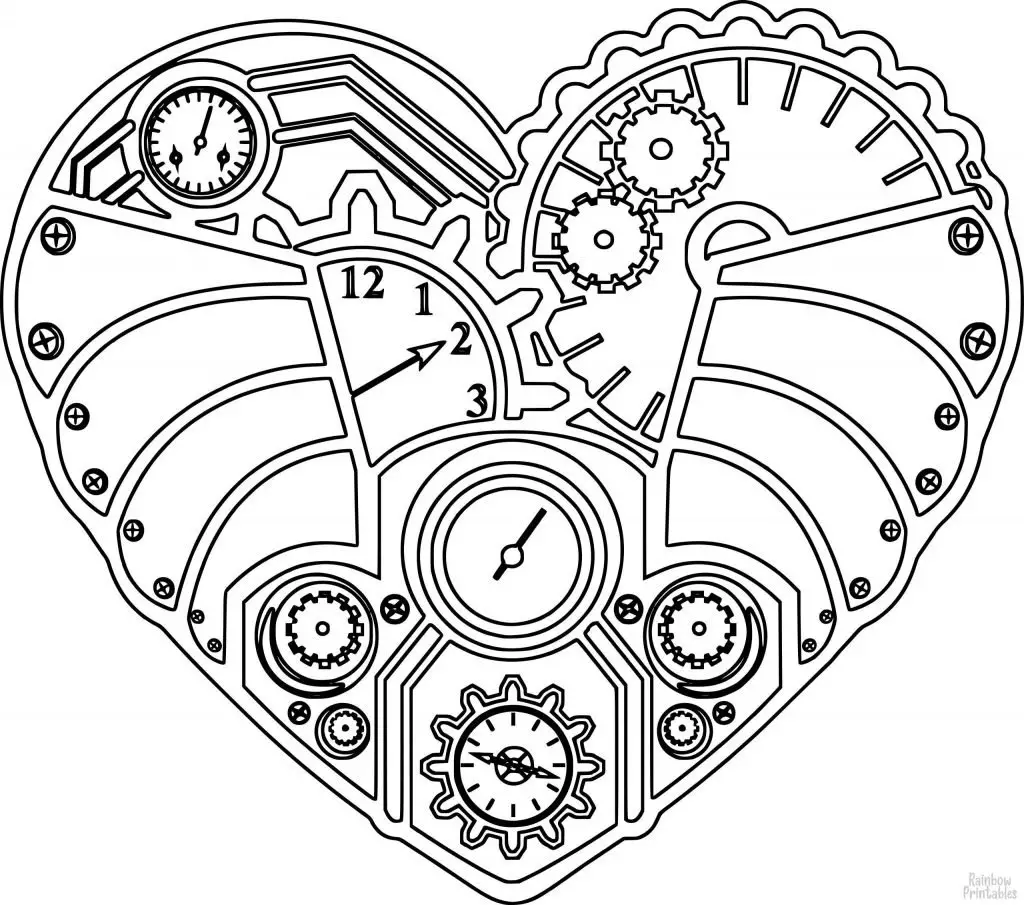
Table of Contents
Timely Word of Advice
Time-telling may look simple for us, but always remember that teaching numbers and analysis to kids are complicated; thus, it takes a lot of time. As parents, we must know that every child has their own learning style, and we need to adjust to it. Some learn through visuals and aural, while others find physical, verbal, logical, social, and solitary styles easier. That’s why these activities are purely recommendations. They can be combined or replaced with other learning strategies, depending on the most effective learning style for your kids. But, most importantly, the key to an effective teaching strategy is to be creative and patient because pressuring your kids to understand something is not a healthy teaching and learning practice. Let them enjoy the process of learning!
And why not check out our collection of free coloring pages for kids! We update our resources library regularly so feel free to check back as we add more and more content. We’re currently at over 1000+ coloring pages and creating more how-to-draw stuff art tutorials!
Note: This tutorial and our many others are suitable for ages 3 to 10 (preschool and above.)
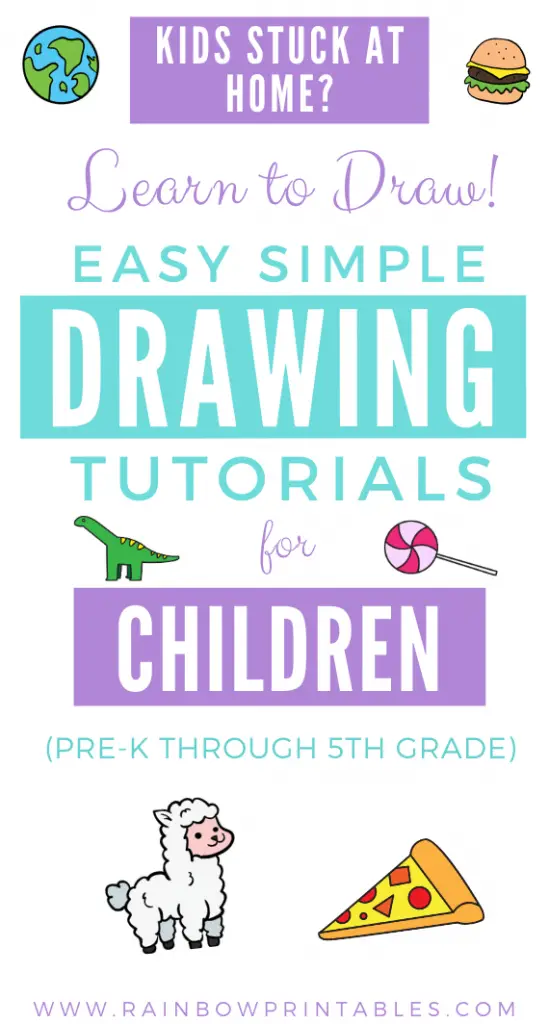
1. Practice Number Counting
In order to tell time, they will need to learn how to count. Counting number is a fundamental skill that children need to learn in their primary years; thus, practicing them is necessary. Before understanding math concepts, children should master counting from 1-100, and it is quite challenging for parents and teachers! We all know that they have a short attention span, so they need a lot of entertainment. With that, we compiled a list of interactive games and worksheets wherein your child can enjoy and learn number countings!
Count And Match The Chocolate-Chipped Cookies
Everyone loves cookies! That’s why it is one of the best techniques to engage your child in numbers. All they need to do is count the chocolate chips on top of the cookies and match them to the correct number. You can do this cookie activity with a worksheet or with real-life cookies!
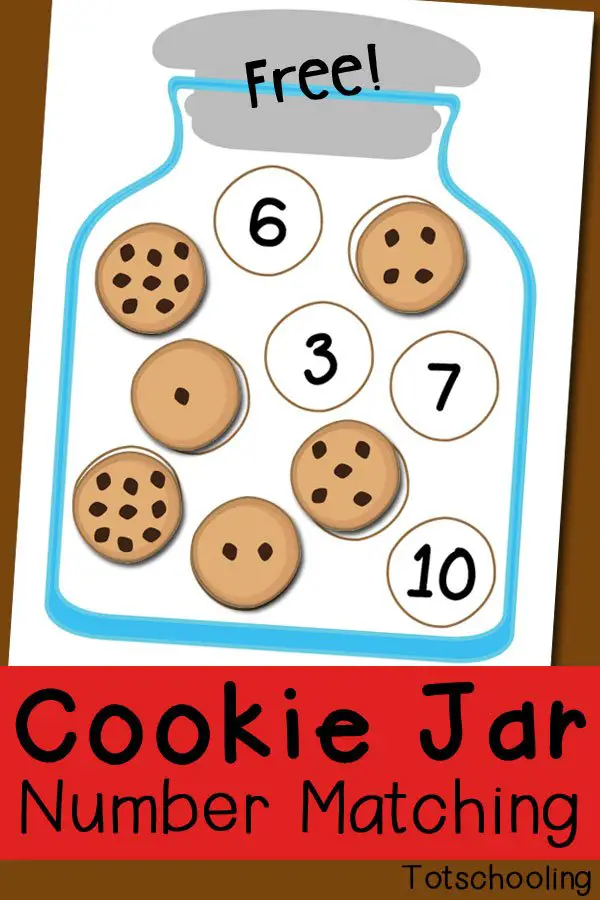
Complete the Missing Numbers
Old but gold! Counting numbers is best learned by filling in the missing numbers while writing them at the same time. Writing the numbers gives the children longer retention in the lesson, but always remember that even worksheets should be appealing to the children’s eyes to get their attention, so using animals, cartoon characters, and toys with numbers written on them will attract children.
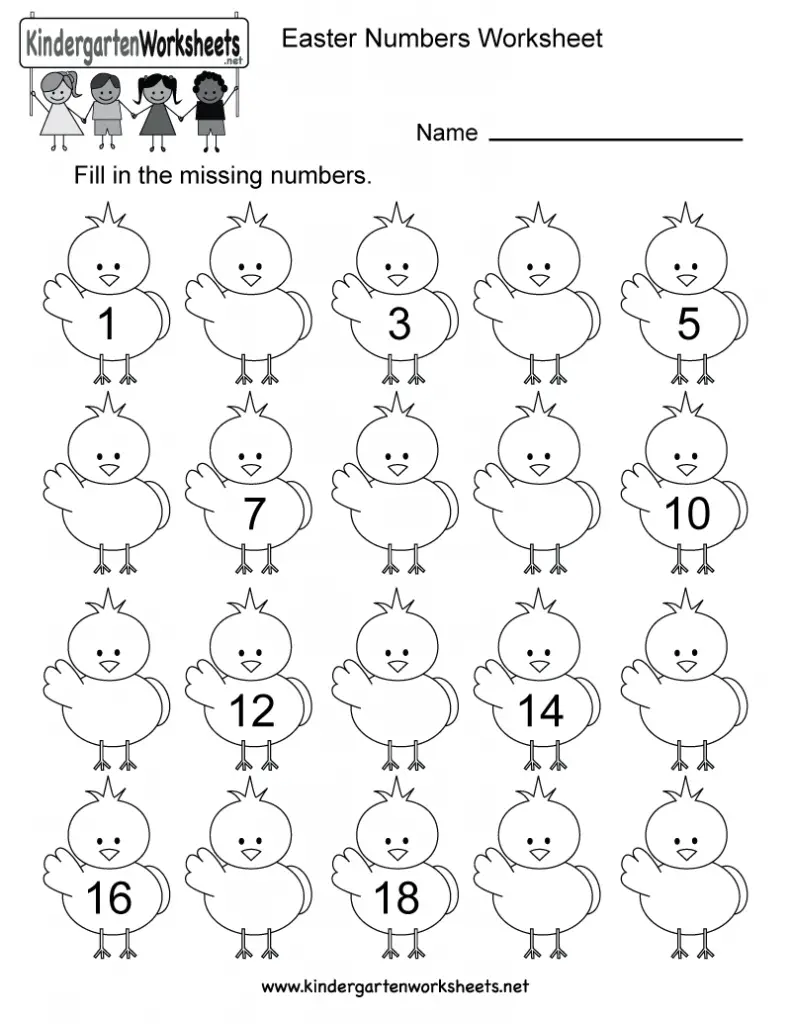
Rubber Duck Math Race
Your child can also learn to count numbers with the help of rubber ducks and tiles. This game is simple but fun and easy because you got to roll the dice first before moving the duck to its new tile. The rolling of dice without any assurance of what number you’ll get adds excitement to the game, making it more thrilling for children.
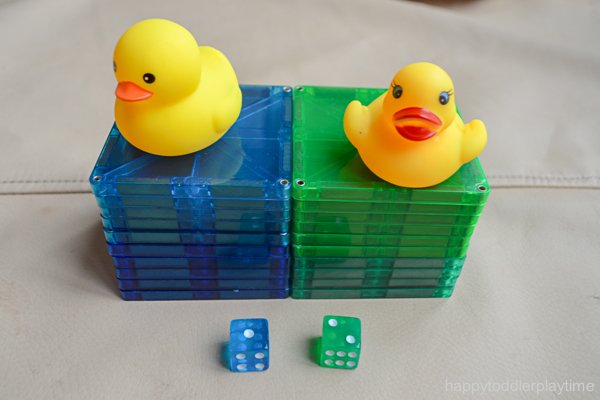
100 Cups: STEM Challenge
Children love to build something out of their toys, so stacking cups will get their attention in learning how to count. You only need a specific number of cups with number labels on them, and the only goal is to stack them correctly until your child builds tower-like numbered cups. This game needs 100 cups, but you can also use 60 cups since time numbers only have a maximum of 60 minutes.
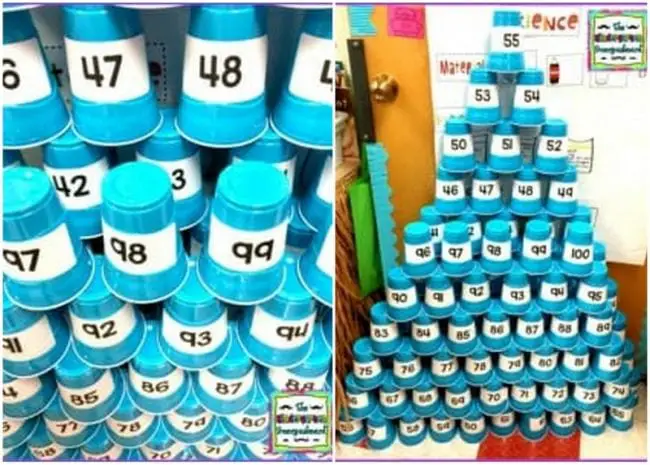
2. Teaching Counting By 5s
Skip counting may sound easy, but it takes a lot of practice to perfect the counting without any dead air. In preschool, counting by 2s, 5s, and 10s are the basics of skip counting, but for telling time, we need to focus on counting by 5. To help you make this lesson more exciting and enjoyable for your children, we have chosen some of the most effective skip counting activities.
Puddle Jump: A GetUp and Move Math Game
This game only takes five minutes of preparation but gives so much fun and learning for kids! With only three materials needed, you can enjoy playing this game outside or even inside a classroom or study area. On top of practicing skip counting by jumping from puddle to puddle, kids also develop their physical health and social skills.
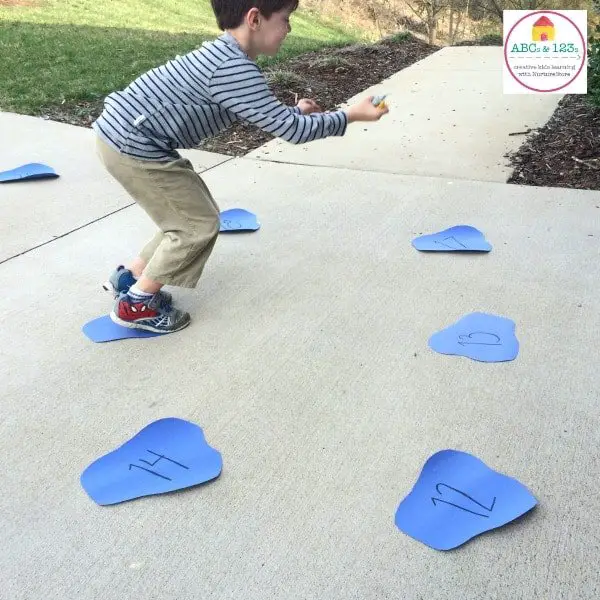
Skip Counting with Popsicle Sticks
Popsicle sticks are very accessible to everyone. That’s why this game is very convenient for mums and kids at home. You only need colorful popsicle sticks and a marker. The colored popsicles add more attraction to children while the marker labels the popsicles with numbers. This game will not only practice their skip counting skills, but they will also develop their analysis on which one should come first and which one will be next.
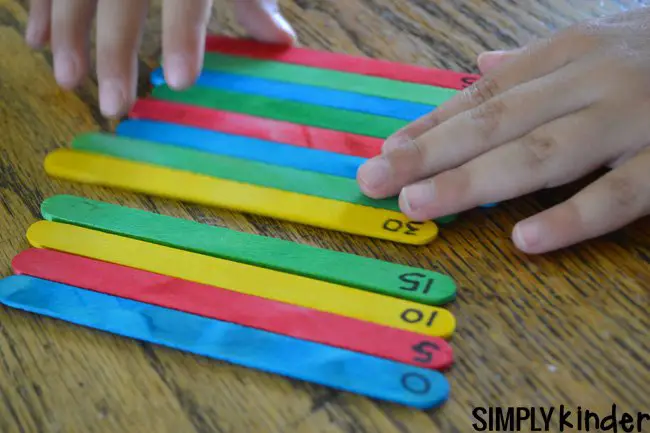
Cute and Entertaining Counting by 5s Caterpillar Worksheet
Worksheets are also effective learning materials for skip counting. They may sound boring when children hear the word “worksheet,” but we should always find ways to make them look cute and entertaining. You can use animals, plants, toys, or anything that you think may get your children’s attention and make learning easier.
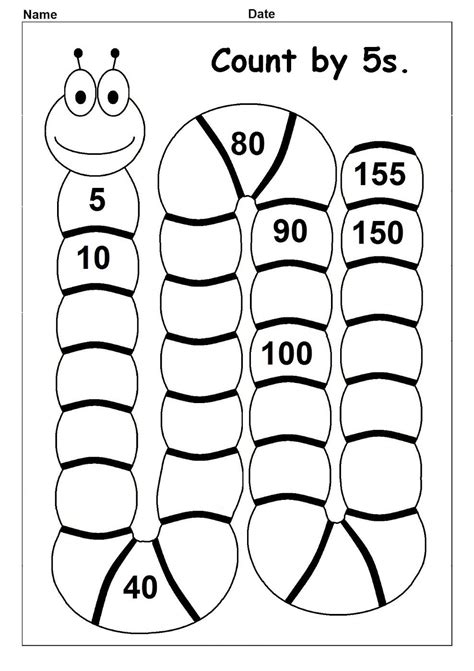
3. Introducing Time Concept
Teaching kids the concept of time is not an overnight process. They need to know the concept first before they can understand the analog clock. Daily changes and activities represent the time concept, and by teaching them to your children, they will soon formulate their question: “what time is it?” Until then, your child is already ready to learn what is a specific time.
Picture Diary for Daily Routines
Morning, noon, and evening are not counted as definite times, but using them, children can easily understand what’s happening in a day and what part of the day things usually happen. Explaining this activity may confuse their developing minds, so it’s best to present this concept in the form of a picture diary with their favorite cartoon character or even with their face doing activities in a particular part of the day.
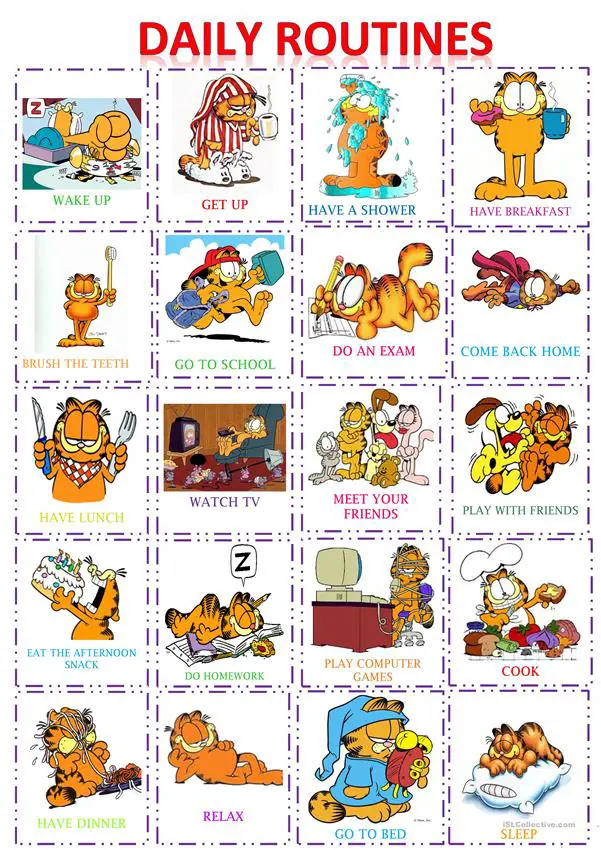
Half-Hour Telling Time Puzzles
After learning the concept of the morning, noon, and evening, your child is now ready for the half-hour telling time! Introducing the whole idea of an analog clock all at once may cause complications to the mind of your children. That’s why we always present the half an hour and the one-hour concept first. To lessen its difficulty, remember that being creative is the answer – teach it with puzzles!
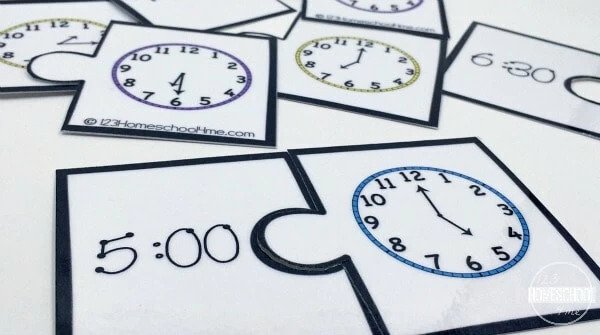
4. Make a DIY Clock Model
A clock model helps learners navigate time closely, making it easier for them to memorize everything they need to know about an analog clock. A DIY analog clock typically has an hour hand, minute hand, minute lines, and numbers, but you can always put the second hand. With this DIY craft, learning time-telling can be more creative and attractive to children, so we give you some options in creating them!
DIY Bright Yellow Sun Analog Clock
The classic cardboard analog clock is a gem! Though it appears modern, it still serves the same purpose: to help children learn time. This sun analog clock seems more convenient because the sun rays are filled with the skip counting by 5.
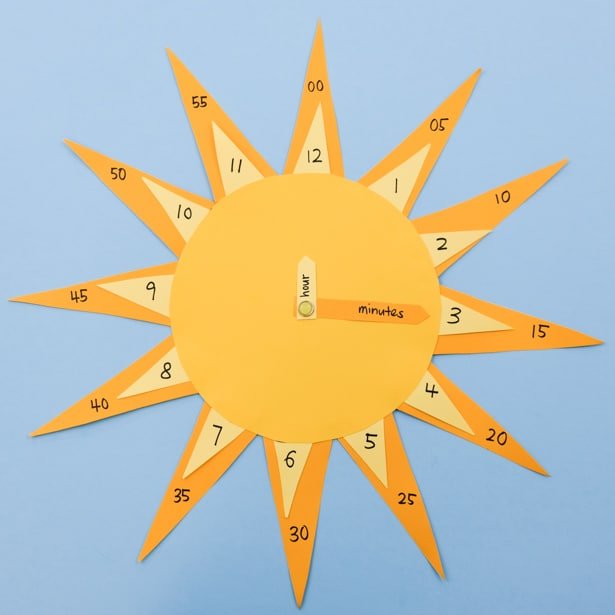
Simple Paper Plate Tell Time Craft
If you don’t want to take a lot of time cutting a perfect circle for your kid’s analog clock, you can use a paper plate for an instant perfect circle! All you have to do is add details to complete the clock’s parts and paint it if you want, depending on how you like it!
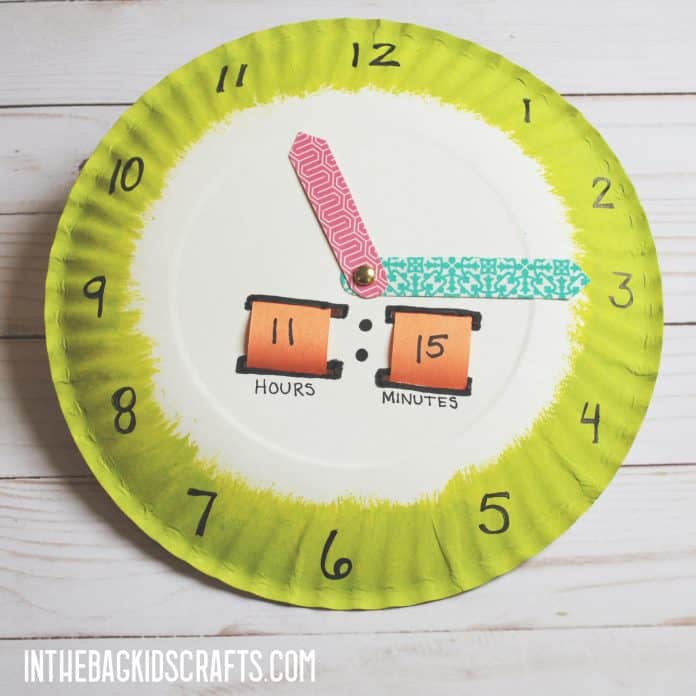
5. Interactive Time Practice
Telling time takes a lot of practice, so it should be part of our routine, so incorporating it with children’s activities is an effective learning technique. With this indirect training, you will easily know when your child is already ready for more advanced activities and worksheets. But, let us always remember that the more complex the lesson gets, the more fun and entertaining it should be. Here are some of the recommended activities for your kids!
Daily Routines Telling The Time Worksheet
In this advanced activity, you can combine the time concept, analog clock, and digital time to your kids. With a single worksheet, they can note their activities during the day with the exact time they have done them. But of course, you still need to explain everything thoroughly for a better understanding and output.
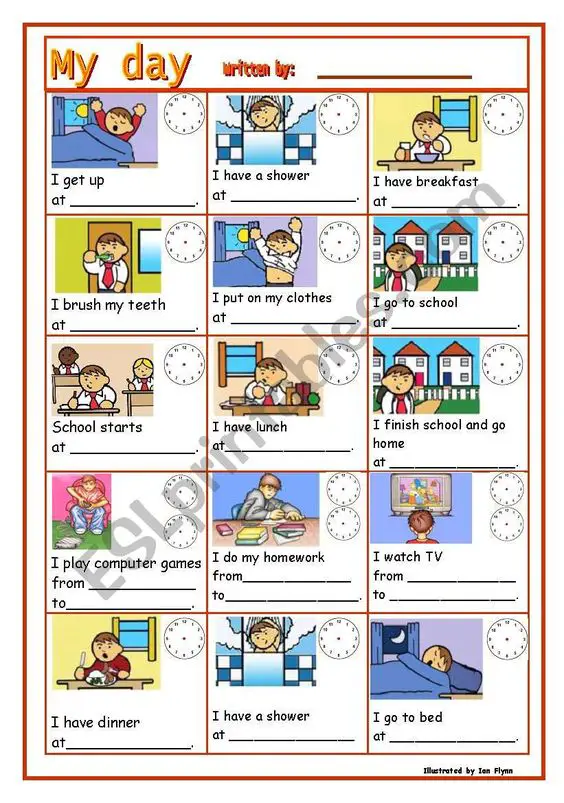
Daily Routine Worksheet with Time and Vocabulary Builders
If you also want your child to expand their vocabulary while learning time-telling, you can also use worksheets that allow them to express their thoughts. Remember that this activity is advanced, so you can demonstrate how to do it first for them to understand it better.
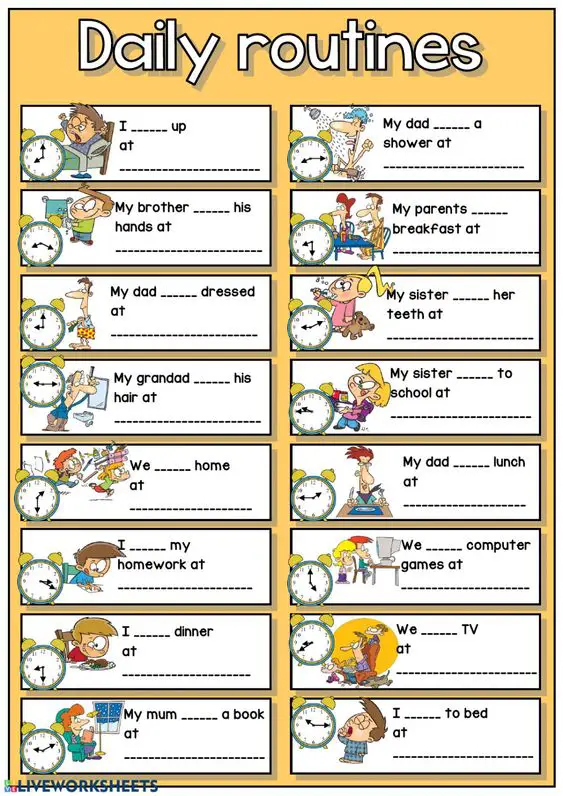
🏎️ Related Reads:
- 15 Epic Learning Science Experiments at Home for Kids
- 25 Developmental Toddler Play Ideas for a Healthy Brain, Body, and Soul
- 15 Activities That Will Make Your Kids Love Road Trips
Are you new here?
Why not check out our collection of free coloring pages for kids! We update our resources library regularly so feel free to check back as we add more and more content. We’re currently at over 1000+ coloring pages and creating more how-to-draw stuff art tutorials!


